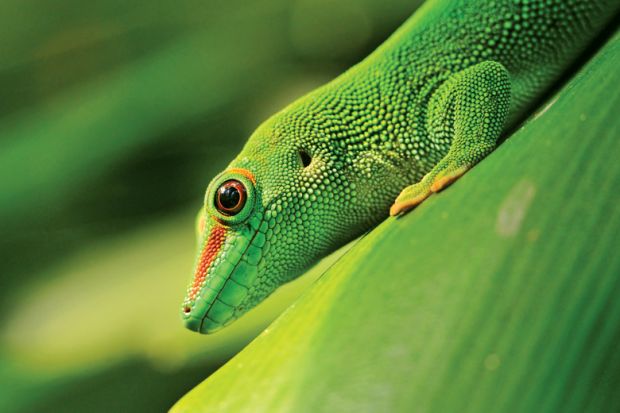You’d be forgiven for wondering whether there could be enough fables, myths and stories involving amphibians and reptiles to fill an entire volume, but herpetologist and science writer Marty Crump has accomplished the feat with aplomb, and the result is a beautiful, engaging and absorbing collection. But this is more than just a set of tales from around the globe: Crump also teases out our deep-rooted ambivalence towards a group of creatures we have long cast in both positive and negative lights.
Along with more familiar creation myths and folk tales, Crump also serves up some rather unusual accounts. The Wa, an ethnic group in Myanmar, tell a story of their being descended from tadpoles, which transformed into frogs, and then into ogres who finally became human when they captured and ate a man. I was surprised to hear of a legend recounted in the Middle Ages by a western Slavic tribe in which frogs, rather than storks, deliver babies. Apparently being eaten by a crocodile is not always a wholly bad thing; in Bago in Myanmar, it was thought that those eaten by crocodiles went to a place of perpetual happiness, and Filipinos once considered it an honour to be eaten by one.
As a scientist I was glad to see that Crump’s aim does not begin and end with the telling of tales, however fascinating. People’s attitudes towards animal species can play a major role in the ultimate success of conservation efforts, and Crump valuably considers the wide range of attitudes towards amphibians and reptiles worldwide. Along the way, she serves up lots of interesting natural history details. I was fascinated to find out that the Siberian newt can survive temperatures of -40°C, and can remain frozen in the permafrost for years. When the ice melts, they apparently just stretch their legs and walk off!
We are also treated to bizarre and slightly stomach-churning details of dishes and drinks made with snakes: snake bile mixed into distilled spirits (Vietnam), cobra blood dripped into rice wine (China), and pills made out of powdered rattlesnakes (Mexico), all consumed in the belief that they increase virility. In fact, an astounding number of reptiles are believed to convey fertility and heighten libido, and countless species are at risk as a result.
On the downside, Crump’s account can sometimes read like a jumbled collection of diverse facts. Although an attempt is made to separate positive and negative attitudes towards reptiles, it is clear while reading these tales that often no such clear distinction exists. Religious snake handlers, for example, are presented as having a positive attitude, but presumably they handle snakes not because they feel positively towards them, but rather to prove their commitment to their faith by overcoming their fear.
Eye of Newt and Toe of Frog’s main message, it seems, is that conservationists can make use of an understanding of how attitudes towards amphibians and reptiles are shaped by mythology. Crump illustrates this point neatly with an account of how the attitudes of Portuguese children towards geckos were changed through a story told to them in primary school. Hearing a positive story about the animals made them feel more positive towards them in everyday life. I hope that this book, along with providing a lively overview of folk beliefs about these animals around the world, can help to play a role in amphibian and reptile conservation.
Inga Zeisset is senior lecturer in ecology and evolution, University of Brighton.
Eye of Newt and Toe of Frog, Adder’s Fork and Lizard’s Leg: The Lore and Mythology of Amphibians and Reptiles
By Marty Crump
University of Chicago Press, 304pp, £24.50
ISBN 9780226116006 and 6143 (e-book)
Published 14 December 2015
Register to continue
Why register?
- Registration is free and only takes a moment
- Once registered, you can read 3 articles a month
- Sign up for our newsletter
Subscribe
Or subscribe for unlimited access to:
- Unlimited access to news, views, insights & reviews
- Digital editions
- Digital access to THE’s university and college rankings analysis
Already registered or a current subscriber?




